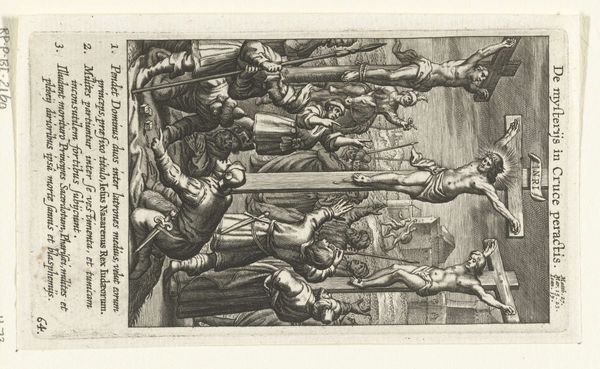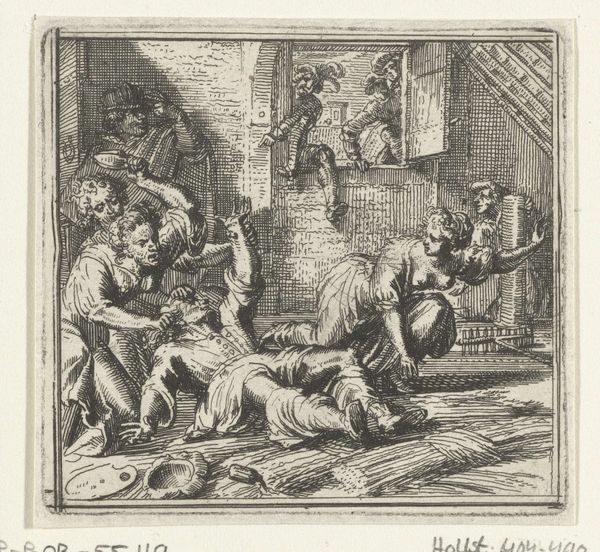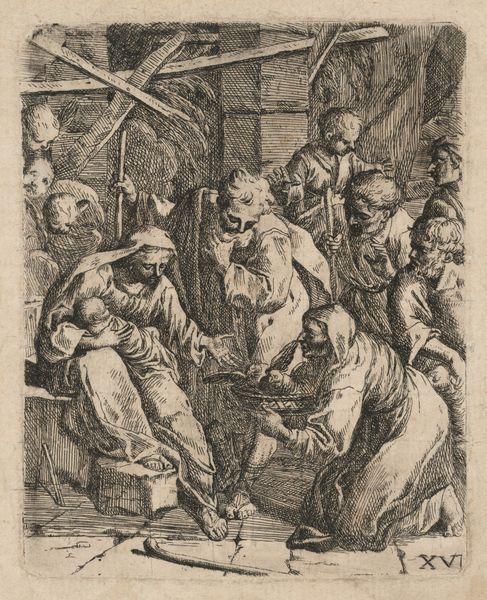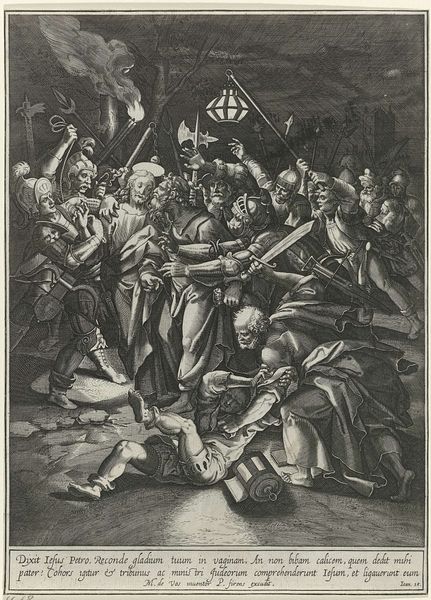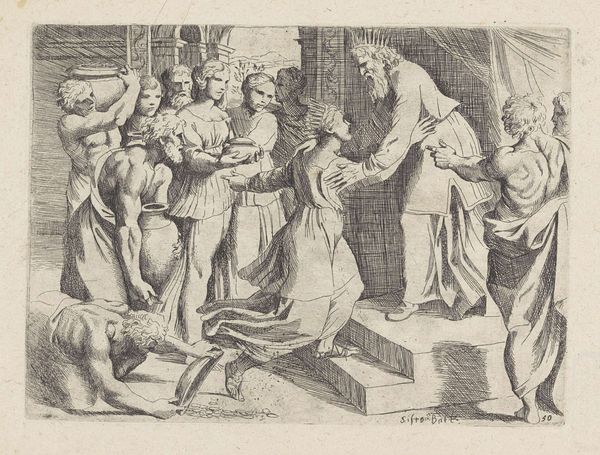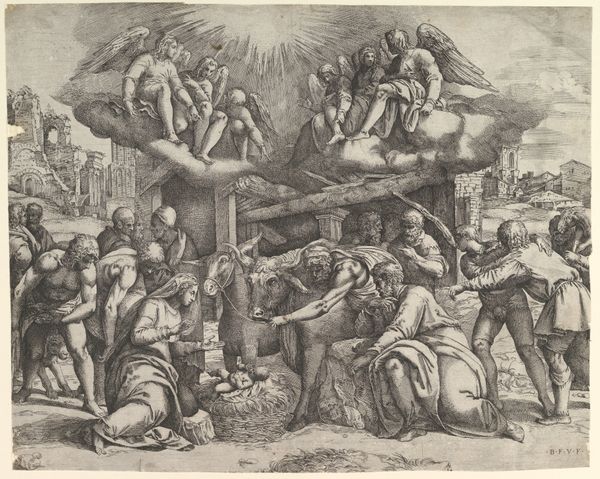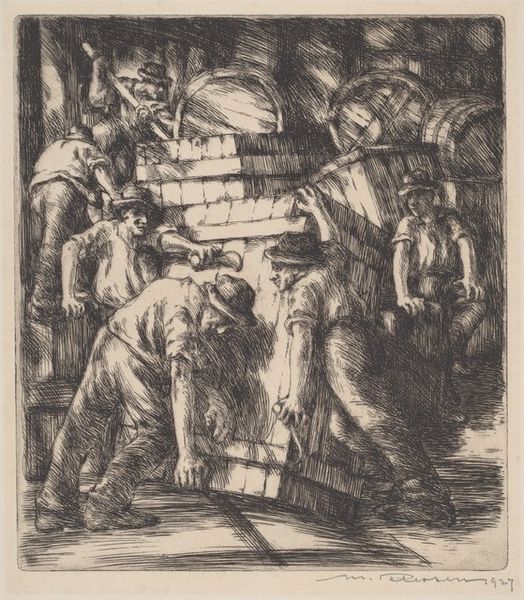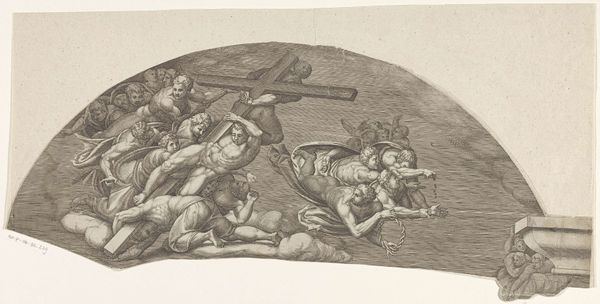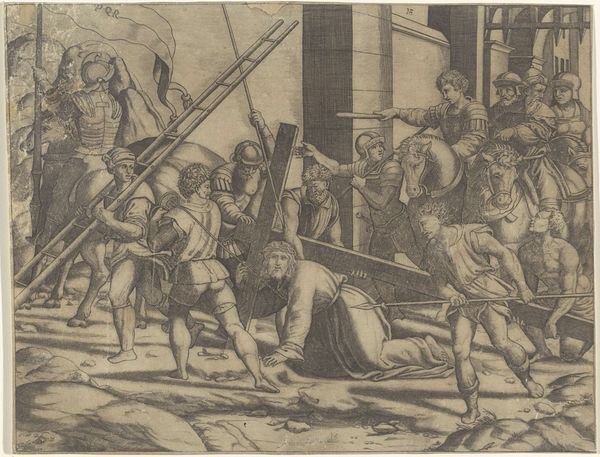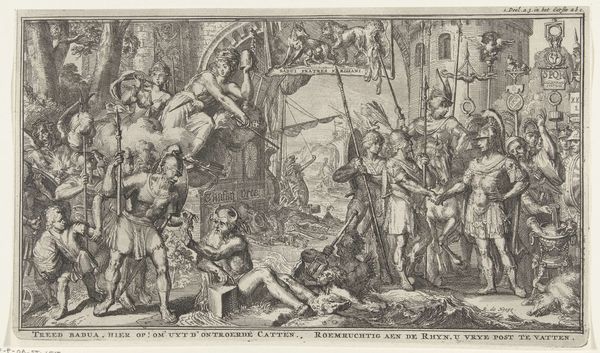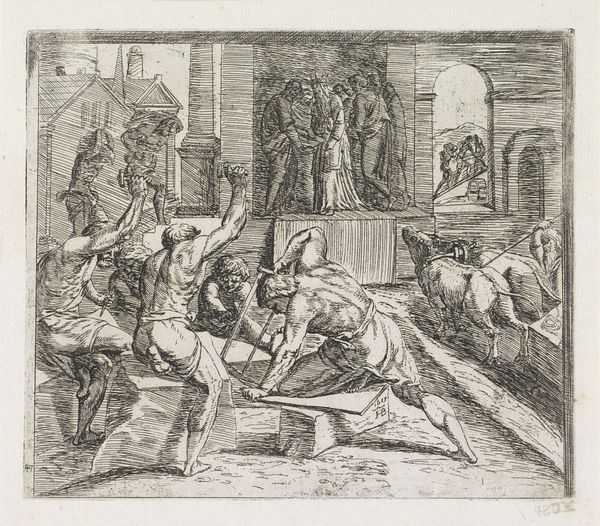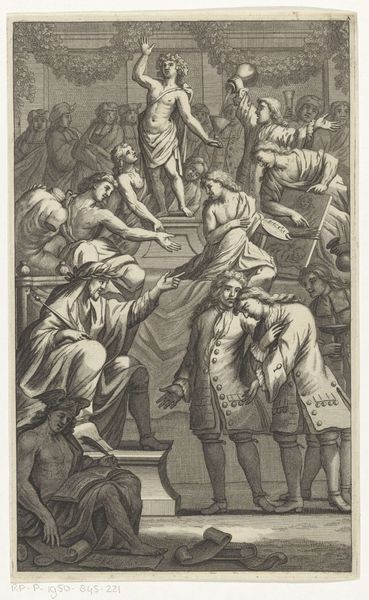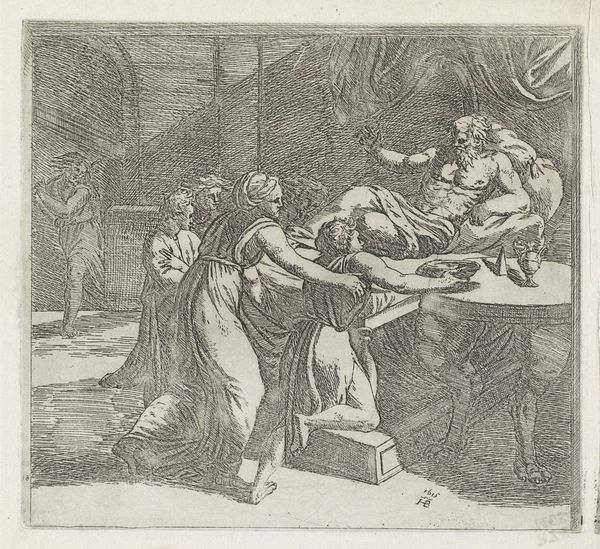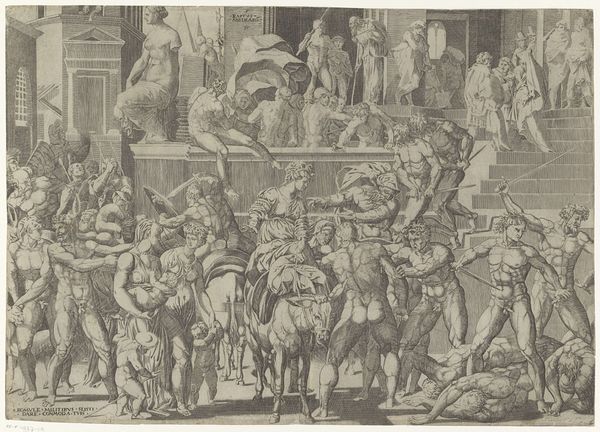
drawing, print
#
drawing
# print
#
genre-painting
#
realism
Dimensions: image: 30.2 × 40.2 cm (11 7/8 × 15 13/16 in.) sheet: 32.6 × 43.7 cm (12 13/16 × 17 3/16 in.)
Copyright: National Gallery of Art: CC0 1.0
Curator: Harry Sternberg's 1929 print, "Roundhouse #2," presents a dynamic depiction of laborers within an industrial setting. Editor: It strikes me as a composition dominated by stress and muscular exertion. The sharp, dark lines contribute to a mood that’s simultaneously forceful and claustrophobic. Curator: Absolutely. There's a convergence of meanings here. Roundhouses, as architectural spaces, became potent symbols of industrial modernity, and as symbols of societal "progress", it has undeniable visual connections with masculinity and the perceived virility of work. This composition showcases the human element as cogs, intertwined and inextricable, within these vast machine systems. Editor: I can see that in the relentless repetition of form. Notice how the bodies seem to echo each other, their postures contorted in a coordinated, almost inhuman exertion, reinforcing that idea. And these stark contrasts almost flatten the image into planes of black and white, which amplifies this sense of confinement. Curator: Yes, this connects to the larger theme of genre-painting. The print immortalizes this critical labor moment, freezing them forever in the public memory. Editor: Sternberg's masterful use of line serves the subject so well. Every scratch seems purposeful, deepening the image’s sense of dynamism and tension. The sharp angles created by his marks add to this urgency that the composition conveys. Curator: Precisely. These are not generic figures. He captured real emotions: sweat, tension, strain – reflecting the period's fascination and awe with labor as transformative work. The psychological implications here—the worker’s engagement in grueling and relentless activity—transcend the physical to tap into broader societal energies. Editor: It’s quite arresting how Sternberg renders an industrial subject into something that feels intensely physical, tactile even, through the rigorous and thoughtful articulation of light and dark. He highlights not just the physicality of the men but the looming mechanical force that both employs and contains them. I leave this with a profound sense of ambivalence of the toil we have created as part of our existence. Curator: Well said. By capturing these individual efforts against the larger backdrop, he evokes collective memory and how integral work has always been. He turns our gaze inward, prompting questions about humanity, power, and the forces shaping our own histories.
Comments
No comments
Be the first to comment and join the conversation on the ultimate creative platform.
